





Payment kiosk is a self service machine designed to handle financial transactions, enabling customers to make payments independently without assistance from staff. These kiosks are commonly found in locations like retail stores, parking lots, hospitals, and government offices. They support various payment methods, including credit cards, debit cards, mobile payments, and cash. Payment kiosks help reduce wait times, improve service efficiency, and streamline operations by offering convenient, secure, and user-friendly payment solutions. They can also be customized to meet specific business needs, making them versatile tools for a variety of industries.
Welcome to our Payment Kiosk FAQs homepage. As a professional kiosk manufacturer, we are dedicated to providing top-notch customization, design, and OEM/ODM services for payment kiosks and other types of kiosk machine. Alongside delivering high-quality kiosk products, we aim to share and popularize knowledge about the kiosk industry. Below, we have compiled common questions about payment kiosk, covering various aspects including what a payment kiosk is, its main functions and applications, as well as step-by-step usage guides and common payment methods. Additionally, we address how to troubleshoot issues that may arise during use. These insights will help you better understand payment kiosks. Please read carefully, and feel free to join our discussion as we work together to offer even better payment kiosk services!
| Payment kiosk definitionA payment kiosk is a self-service machine designed to facilitate secure and efficient transactions. It allows customers to make payments for services, bills, or purchases without the need for direct interaction with staff. These kiosks support various payment methods, including cash, credit/debit cards, and digital wallets, providing convenience, reducing wait times, and enhancing overall customer experience in retail, hospitality, and service industries. What is a payment kiosk?A payment kiosk is a self-service kiosk designed to facilitate various types of transactions, allowing users to make payments for goods or services without the need for direct human interaction. These kiosks are commonly used in locations such as transportation hubs, retail stores, and utility offices. For instance, at a bus stop, users can insert money into the kiosk to purchase a bus ticket, which is printed automatically. Payment kiosks can accept different payment methods, including cash, credit cards, or digital payments, making them a convenient and efficient solution for quick, hassle-free transactions. |
A self-payment kiosk is a self-service system that functions as its own point of sale (POS), allowing customers to independently place orders and make payments. These kiosks provide a fully contactless and efficient service, enabling users to complete transactions without waiting for assistance from staff. Commonly found in restaurants, retail stores, and other service areas, self-payment kiosks offer a streamlined purchasing experience, reducing delays and improving customer satisfaction by allowing them to make quick, convenient payments using various methods such as credit cards, mobile payments, or cash.
Below is a detailed table outlining the common components and specifications for a payment kiosk:
| Component | Description | Specifications |
|---|---|---|
| Display Screen | The interface where users interact with the kiosk to make selections and payments. | Touchscreen, typically 15" to 32", with options for capacitive or resistive touch technology. High brightness for outdoor models. Resolution options: 1080p Full HD or 4K. |
| Payment Terminal | Device used for processing different types of payments like credit/debit cards, mobile payments, and NFC payments. | EMV-compliant card reader, NFC for mobile payments (e.g., Apple Pay, Google Wallet), PIN pad, contactless payments, magnetic stripe reader. |
| Cash Acceptor/Dispenser | A module for accepting and dispensing cash or coins, often used in bill payment kiosks or vending machines. | Cash acceptor: Validates bills from multiple currencies; typically supports up to 500-1000 notes. Dispenser: Provides change, typically supports coins and small bills. |
| Receipt Printer | Prints a receipt after the transaction is completed, often used in kiosks that deal with payments for tickets or receipts. | Thermal printer, 80mm width, automatic cutting feature, paper roll capacity typically up to 100 meters, 203-300 dpi resolution. |
| Barcode Scanner | Scans tickets, invoices, or QR codes for payment or identification purposes. | 1D/2D barcode scanning capability, typically laser or imaging-based, supports QR codes and barcodes. Can be mounted or handheld. |
| Camera | Used for facial recognition, ID verification, or monitoring. | HD/Full HD resolution, integrated with biometric software, supports privacy filters, wide-angle lenses available for security monitoring. |
| Speaker/Microphone | Enables audio interaction or guidance during payment transactions. | Built-in speaker (stereo/mono), microphone for voice commands or intercom communication. Typically 2W-10W output power. |
| Operating System (OS) | The software environment in which the kiosk operates. Supports the interaction between hardware components. | Windows, Android, or Linux-based OS, depending on the application. Support for cloud-based services and remote management. |
| Processor & Memory | Core hardware responsible for kiosk performance, running software, and processing transactions. | CPU: Intel Core i3/i5/i7, or ARM-based processor for Android. RAM: 4GB-16GB depending on complexity of tasks. SSD storage, typically 64GB-256GB. |
| Enclosure | The physical casing or body of the kiosk, designed to protect internal components and provide aesthetics. | Metal or high-strength plastic, available in customizable colors and designs. Options for weather-resistant, anti-vandal, and tamper-proof enclosures. IP65 rating for outdoor models. |
| Internet Connectivity | Ensures communication between the kiosk and central servers for data transactions, remote updates, and monitoring. | Wi-Fi, Ethernet, 4G/5G modem options, support for VPN and secure networks. |
| Security Features | Tools and components that ensure the kiosk is secure from theft, tampering, or unauthorized access. | Tamper-resistant enclosure, PIN code access, alarm system, security camera integration, encryption for data transmission, PCI-DSS compliance for payment processing. |
| UPS (Uninterruptible Power Supply) | A backup power system to ensure the kiosk functions without interruption during power outages. | Battery capacity: 500-2000VA, supports up to 4 hours of runtime depending on load. |
| Cooling System | Maintains optimal operating temperature for the kiosk’s internal components, especially for outdoor or high-use models. | Fan-based or passive cooling system, heat-dissipation design, suitable for ambient temperatures ranging from -20°C to 50°C. |

Payment kiosks are versatile tools used in various industries for streamlined, self-service payment processing. Here are some common applications:
Bill Payment Kiosks: Found in utility companies, telecom providers, and government offices, allowing customers to pay bills, fees, and fines without the need for human interaction.
Transportation & Ticketing: In airports, bus stations, and train terminals, payment kiosks allow users to purchase tickets for travel quickly and conveniently.
Retail & Quick Service Restaurants (QSRs): Used in retail stores and fast-food outlets, payment kiosks enable customers to make payments for goods or services, reducing wait times and increasing order accuracy.
Parking Payment: In parking lots and garages, kiosks allow drivers to pay for parking without requiring an attendant, supporting cash, card, or mobile payments.
Healthcare & Hospitals: Patients can use payment kiosks for co-pays, scheduling appointments, and paying medical bills, making hospital visits more efficient.
Vending & Product Dispensing: Some vending machines now function as payment kiosks, allowing users to pay for products such as snacks, beverages, or even electronics.
Movie Theaters & Entertainment Venues: Payment kiosks in theaters let customers purchase movie tickets or concessions without interacting with a cashier, enhancing the customer experience.
Banking & ATMs: Payment kiosks in banks allow customers to pay loans, credit card bills, and other financial services, providing self-service banking options.
Payment kiosks offer a range of advantages and benefits for businesses and customers alike. Here are some key advantages:
Improved Efficiency: Payment kiosks speed up transaction times, reducing queues and wait times. Customers can make payments quickly, and businesses can handle more transactions without requiring additional staff.
24/7 Service Availability: With payment kiosks, businesses can offer services around the clock. Customers can make payments at their convenience, even outside regular business hours.
Cost-Effective: Kiosks reduce the need for staff, lowering labor costs. Over time, this can lead to significant savings for businesses, particularly in high-traffic locations.
Enhanced Customer Experience: Self-service kiosks provide customers with control over their transactions, allowing them to pay without assistance, improving satisfaction and reducing pressure on service staff.
Increased Accuracy: By automating the payment process, kiosks help minimize human errors, ensuring more accurate transactions and reducing potential disputes.
Multiple Payment Options: Payment kiosks support a variety of payment methods, including cash, credit/debit cards, mobile payments, and even digital wallets, offering flexibility to customers.
Security: Advanced payment kiosks come with built-in security features like encryption and secure payment gateways, protecting sensitive customer information and reducing fraud risks.
Data Collection & Reporting: Payment kiosks allow businesses to collect transaction data, providing insights into customer behavior, sales trends, and payment patterns. This data can be valuable for optimizing operations.
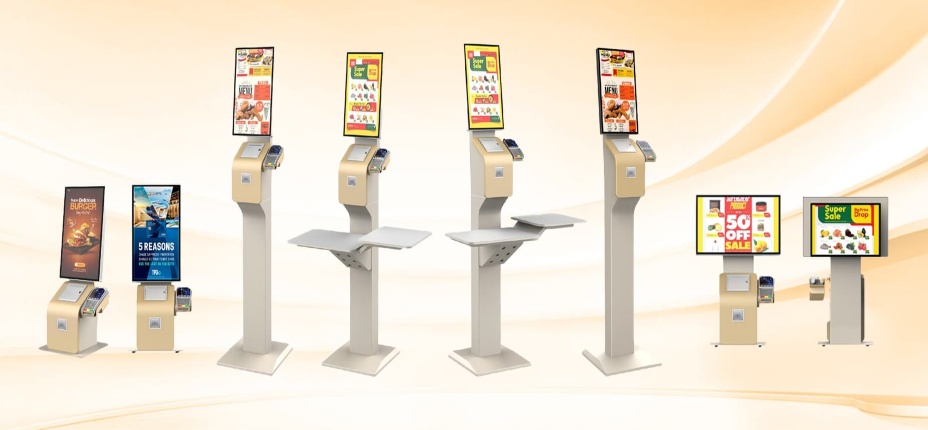
Payment kiosks offer various customization options to meet the specific needs of different businesses and industries. Key customization options include:
Hardware Design:
| Payment Methods:
|
Software and Interface:
| Security Features:
|
Connectivity:
| Durability and Environmental Adaptation:
|
Payment kiosks typically accept a variety of payment methods, including cash, credit cards, and debit cards. Security: Payment kiosks are equipped with security features to protect customer data.
To pay with a kiosk machine, simply select your items or services on the touchscreen, review your order, and choose your preferred payment method. You can typically pay using a credit or debit card by inserting it into the card reader, tapping for contactless payment, or swiping. Some kiosks also accept mobile payments or cash. Follow the on-screen instructions to complete the transaction, and you'll receive a receipt once the payment is processed.
KIOSK's bill payment kiosks allow customers to easily pay bills with cash, credit card, or debit card.
Here are more of our payment kiosk FAQs, addressing a wide range of inquiries from various groups, including payment kiosk buyers, manufacturers, users, and scholars. These FAQs cover essential topics such as product functionality, customization options, technical specifications, and industry trends. Whether you're looking to purchase, build, use, or study payment kiosks, these questions and answers will help you gain deeper insights and make informed decisions regarding your payment kiosk needs. Explore the answers and feel free to join the conversation!
If you're considering purchasing a payment kiosk for your business, it's essential to fully understand the key questions and answers provided below. These FAQs will help guide your decision-making process by offering insights into costs, features, customization, and industry applications. By familiarizing yourself with this information, you can ensure that you choose the right kiosk solution to meet your needs, enhance customer experience, and optimize operational efficiency.
Payment kiosks can handle multiple payment types, such as credit/debit cards, mobile payments (Apple Pay, Google Pay), NFC, QR codes, and even cash. Some kiosks can also accept cryptocurrencies depending on integration.
The cost of a payment kiosk ranges from $3,000 to $15,000 depending on features, hardware specifications, software integrations, and customization options.
Payment kiosks are widely used in industries like retail, healthcare, transportation, hospitality, parking facilities, and fast-food chains. They improve payment efficiency and reduce staff workload.
Yes, payment kiosks can be customized based on branding, screen size, payment options, hardware (e.g., barcode scanners, receipt printers), and software integrations to fit specific business needs.
Payment kiosks can integrate with existing POS systems, CRM, inventory management software, and accounting tools. API integrations ensure smooth data flow and accurate reporting.
Yes, payment kiosks are equipped with encryption technologies, including PCI-DSS compliance, to protect sensitive customer data. Regular security updates and firewalls ensure data security.
Installation time varies but typically takes between a few hours to a couple of days, depending on the complexity of the system, software integration, and customization requirements.
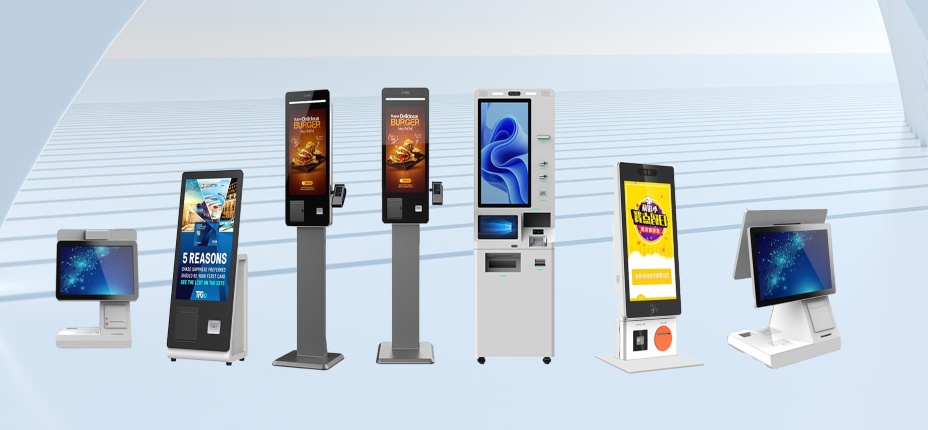
Yes, outdoor payment kiosks are available, and they are designed with weatherproof and durable casings to withstand elements like rain, heat, and dust.
Payment kiosks offer faster transactions, reduced labor costs, increased payment accuracy, and an improved customer experience by reducing wait times and enhancing convenience.
Payment kiosks require regular cleaning of screens, hardware checks, software updates, and occasional servicing of internal components like receipt printers or cash drawers to maintain optimal functionality.
Payment kiosks are designed with intuitive user interfaces, guiding customers through each step of the transaction process. They can be customized to be multilingual and ADA-compliant for accessibility.
Yes, payment kiosks can process refunds if they are connected to the POS or accounting system, allowing customers to return products and get their money back directly at the kiosk.
The average lifespan of a payment kiosk is between 5 to 7 years, depending on usage, maintenance, and the environment in which it operates (indoor vs. outdoor).
Most modern payment kiosks can be designed to be ADA-compliant, offering accessibility features like adjustable screen height, audio prompts, and tactile feedback for users with disabilities.
Yes, payment kiosks can be configured to support multiple languages, providing a more inclusive experience for customers from different linguistic backgrounds.
Payment kiosks that accept cash are equipped with secure cash drawers. Some models also have bill acceptors and dispensers to handle exact change or provide receipts for overpayments.
Payment transactions at a kiosk typically take between 30 seconds to 2 minutes, depending on the type of payment and the complexity of the process (e.g., scanning items, entering information).
Yes, many kiosk providers offer leasing options, which allow businesses to use payment kiosks for a lower upfront cost while paying a monthly fee. This can be a more affordable option for small businesses.
If a kiosk encounters technical issues, businesses can contact their kiosk provider for remote troubleshooting or on-site maintenance. Most kiosks come with warranty and technical support services to address problems promptly.
Outdoor payment kiosks are designed to withstand harsh weather conditions, including rain, snow, and heat, with rugged construction and weatherproof materials.
Payment kiosks come with encryption technology, secure PIN entry, and PCI compliance to protect sensitive financial data and transactions.
Yes, most payment kiosks can be integrated with a business’s existing POS, CRM, and inventory management systems for seamless operation.
Payment kiosks can be fully customized in terms of design, user interface, and branding, allowing businesses to reflect their unique identity.
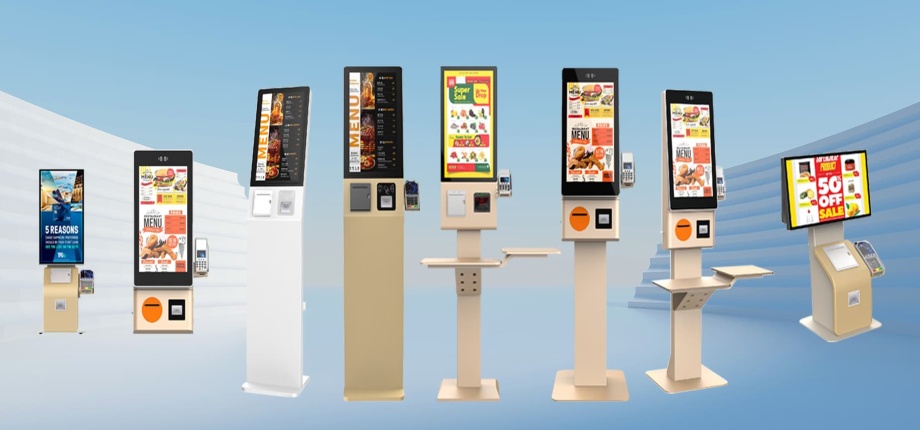
Payment kiosks typically require low maintenance and include features like automatic updates, remote diagnostics, and easily replaceable parts.
Kiosks support various payment methods, including cash, credit/debit cards, mobile payments, and contactless transactions.
Many payment kiosks can be configured to accept multiple currencies, making them ideal for businesses that serve international customers.
The installation process may require electrical wiring, internet connectivity, and space considerations, depending on the model and location.
Depending on the complexity, installing a payment kiosk can take a few hours to a day, including setup and configuration.
Most kiosk manufacturers offer technical support and maintenance services, either remotely or on-site, to ensure proper functioning.
A payment kiosk typically lasts 5-7 years, with regular maintenance ensuring optimal performance throughout its life.
Yes, many payment kiosks offer modular designs that allow for hardware and software upgrades as new technologies emerge.
Kiosks often include remote monitoring systems that can alert technicians to issues. Businesses can also opt for service contracts for quick repairs.
Minimal training is required, as payment kiosks are designed to be user-friendly. However, staff training can help manage issues and assist customers.
While some functions might be limited, many kiosks can operate offline for basic functions, storing transaction data to process once back online.
Ensure your payment kiosk complies with data protection regulations like GDPR and includes secure encryption for all transactions.
Payment kiosks are used in various industries, including retail, transportation, healthcare, hospitality, and entertainment.
Consider your business needs, transaction volume, and customer preferences when selecting a model that fits your operational environment.
Payment kiosks typically require standard power outlets and may have backup power options for continuous operation during outages.
Yes, most payment kiosks can process refunds, returns, and exchanges, streamlining the customer service experience.
For users, interacting with a payment kiosk can be a new experience that raises various questions. From understanding how to make payments to troubleshooting common issues, having clear answers helps to ensure a smooth, hassle-free transaction. This FAQ section covers the most frequent questions users may have when using payment kiosks, providing straightforward explanations about payment methods, security, functionality, and more. This guide helps enhance user confidence and improve the overall payment experience.
Follow the on-screen instructions to select a service, enter payment information, and confirm the transaction.
Most kiosks accept credit cards, debit cards, mobile payments (like Apple Pay or Google Pay), and sometimes cash.
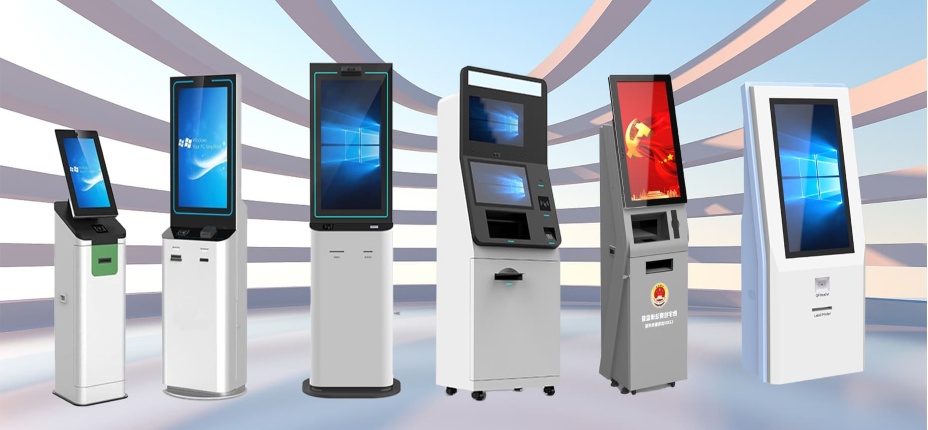
Yes, kiosks use encrypted transactions and PCI-compliant software to ensure your information is secure.
Ensure your card is inserted correctly, check for damage, and try again. If the issue persists, contact customer support.
Many kiosks offer multilingual support. Check for a language selection option on the screen.
Yes, most kiosks offer printed receipts or the option to send an electronic receipt via email or SMS.
Wait a few moments to see if the machine resumes. If not, contact support or use another payment method.
In most cases, you can cancel a transaction before final confirmation. Look for a "Cancel" or "Back" button on the screen.
No, kiosks do not store personal payment information once the transaction is completed.
Report the issue immediately by contacting the service provider listed on the kiosk. Keep any receipts for proof.
Some kiosks allow for multi-service transactions, but this depends on the specific kiosk and service provider.
Many kiosks provide step-by-step instructions or have a help button for customer support.
Yes, most modern kiosks are equipped with NFC readers for contactless payments via mobile phones or cards.
Ensure your hands are clean and dry. If the issue persists, report the malfunction to customer support.
A typical transaction takes 1-2 minutes, depending on the service and payment method.
Refund policies vary by service provider, but most kiosks do not handle refunds directly. You may need to contact customer support.
Use the "Back" or "Cancel" button to return to the main menu and select the correct service.
Most kiosks are designed to be ADA-compliant, offering features such as accessible height, large fonts, and audible instructions.
You will typically receive a confirmation screen and a receipt (either printed or electronic) once the transaction is completed.
Some kiosks allow split payments between two or more methods (e.g., card and cash), but this depends on the specific kiosk.
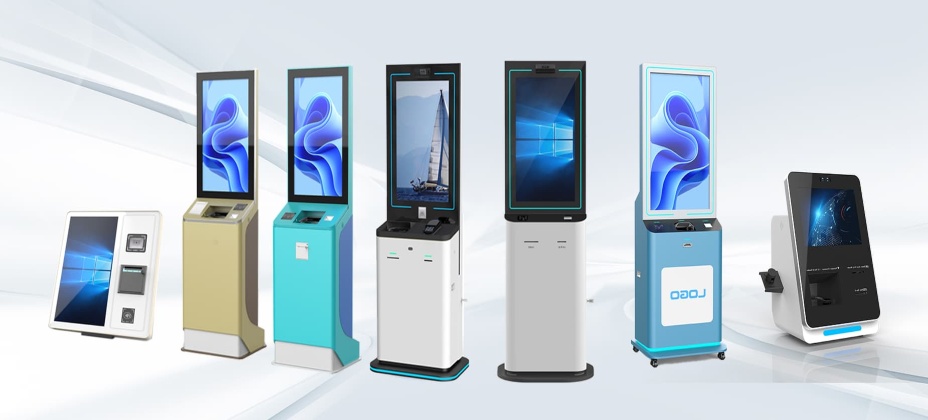
Look for an out-of-order sign or error message. If reported, try using another kiosk or contact customer support for assistance.
Yes, some kiosks are equipped with cash acceptors and can handle cash payments.
Contact customer support with your receipt to report the issue and request a resolution.
Depending on the service, some kiosks allow partial payments, especially for bills or services with installment options.
Look for security features like tamper-resistant designs, encrypted transactions, and PCI-DSS certification.
Some kiosks provide additional services like balance checks, but this varies based on the service provider.
Most kiosks operate 24/7, providing round-the-clock access to services and payment options.
Most kiosks have a service number or contact details for reporting issues directly to the provider.
Yes, many kiosks offer top-up services for prepaid phones, utilities, and more.
Kiosks employ advanced security measures such as encrypted transactions, secure PIN entry, and constant monitoring to prevent fraud.
As a payment kiosk manufacturer, it's essential to address the most common questions from potential buyers and businesses looking to integrate these systems. Payment kiosks are a crucial part of modern payment infrastructures, offering streamlined customer service, improved transaction speed, and versatility across various industries. This FAQ section aims to provide comprehensive answers to frequent questions, helping businesses make informed decisions when purchasing and deploying payment kiosks. Understanding these key aspects can lead to better functionality, customer satisfaction, and a successful deployment.
Typical lead times range from 4-8 weeks, depending on customization and quantity.
Yes, manufacturers can fully customize the kiosk’s exterior, interface, and payment features to align with your branding and operational requirements.
Industries such as retail, healthcare, transportation, and hospitality see the most value in automating payment processes with kiosks.
Materials include stainless steel, aluminum, and weather-resistant plastics, offering durability for both indoor and outdoor environments.
Manufacturers typically offer ongoing technical support, including software updates, troubleshooting, and replacement parts.
Yes, payment kiosks can often be upgraded with new software and hardware components, such as scanners or updated payment systems.
Common methods include credit/debit cards, mobile payments, QR code payments, and NFC (near-field communication) transactions.
Kiosks are shipped in protective packaging and can be installed on-site by professional teams, with comprehensive instructions for setup.
Warranties usually cover 1-3 years for hardware and software components, with extended warranty options available.
Security features include encrypted transactions, secure PIN entry, anti-tamper casings, and PCI compliance.
Manufacturers offer integration with POS systems, CRMs, and inventory management software for seamless operations.
Yes, manufacturers offer ruggedized payment kiosks designed to withstand harsh weather conditions, with IP65-rated enclosures.
Power consumption depends on the model but typically ranges between 100-400 watts, with energy-efficient options available.
Yes, payment kiosks can be programmed to offer multilingual support, accommodating international customers.
They reduce transaction times, lower operational costs, enhance customer satisfaction, and increase payment efficiency.
Manufacturers often provide automatic software updates and remote monitoring to ensure kiosks remain up-to-date.
Payment kiosks come in various sizes, from compact countertop models to full-size freestanding units, depending on the space and functionality required.
Yes, some models can include cash acceptors, dispensers, and recyclers to handle physical cash transactions alongside digital payments.
Bulk orders usually require a detailed consultation, followed by design approval, production scheduling, and logistical planning for delivery and installation.
Kiosks must adhere to industry standards like PCI-DSS compliance, UL certifications for electrical safety, and other region-specific regulations.
From a scholar's perspective, understanding the technical components, infrastructure, and emerging trends in payment kiosk technology is crucial. Researchers often explore areas such as hardware integration, software security, compliance standards, and user experience. This FAQ guide delves into the key questions scholars might raise, providing technical insights into payment kiosk design, operation, and future developments, helping them navigate through complex topics and gain a deeper understanding of this evolving field.
Payment kiosks typically consist of a touchscreen display, card readers, receipt printers, cash acceptors, and processors for data handling.
Most payment kiosks comply with PCI-DSS standards and employ encryption for secure data transmission and storage.
Payment kiosks use transactional middleware to securely process, encrypt, and forward data to backend financial institutions for approval.
Payment kiosks commonly use Windows, Linux, or Android operating systems, optimized for embedded and secure applications.
Kiosks leverage cloud platforms for data synchronization, remote management, and system updates, ensuring seamless operation and monitoring.
AI is increasingly used in kiosks for fraud detection, predictive analytics, and improving user experience through real-time interaction insights.
NFC (Near Field Communication) technology is integrated into kiosks to enable contactless payments using smartphones or contactless cards.
AES (Advanced Encryption Standard) and RSA (Rivest-Shamir-Adleman) are commonly used encryption methods to secure transaction data.
5G improves the speed, reliability, and responsiveness of kiosks, especially in data-heavy applications like video verification and remote diagnostics.
Payment kiosks support multi-currency payments by converting currencies in real-time based on current exchange rates and relevant APIs.
Challenges include ensuring data security, compliance with financial regulations, and creating a seamless user interface for diverse users.
Kiosk developers focus on low-energy processors, automatic screen dimming, and energy-efficient components to reduce power consumption.
Biometric systems, such as fingerprint or facial recognition, are integrated into kiosks to provide additional layers of security during payment transactions.
Relational databases like MySQL or PostgreSQL, as well as NoSQL databases for more scalable applications, are commonly used.
Penetration testing, vulnerability assessments, and ethical hacking are employed to identify and address potential security gaps in kiosk systems.
Blockchain technology is being explored for secure, transparent, and decentralized transaction processing within kiosk systems.
Kiosks store and process user data in compliance with GDPR by anonymizing data, securing consent, and providing data access rights to users.
Voice-activated kiosks are an emerging trend, using natural language processing (NLP) to enhance accessibility and user interaction.
Edge computing allows kiosks to process data locally, reducing latency and improving performance in areas with limited connectivity.
ADA-compliant kiosks feature accessible design elements like braille instructions, adjustable screen height, and audio navigation for visually impaired users.
As a professional payment kiosk manufacturer with over 10 years of experience, we specialize in customized design and OEM/ODM services for a wide range of payment kiosks. Our expertise spans advanced technology, exceptional product quality, and dedicated customer service, making us a trusted partner in the payment kiosk industry. We focus on delivering high-performance payment kiosks that meet the evolving needs of businesses, ensuring reliability and efficiency. Additionally, we are committed to educating our clients about payment kiosk technologies, providing comprehensive support throughout the design and implementation process. We invite potential partners to join us in creating more advanced and efficient payment kiosk solutions, working together to shape the future of self-service technology.
Address: No. 99-15, Fuan intelligent manufacturing Industrial Park, Dayang Road, Fuhai Street, Baoan District, Shenzhen, China